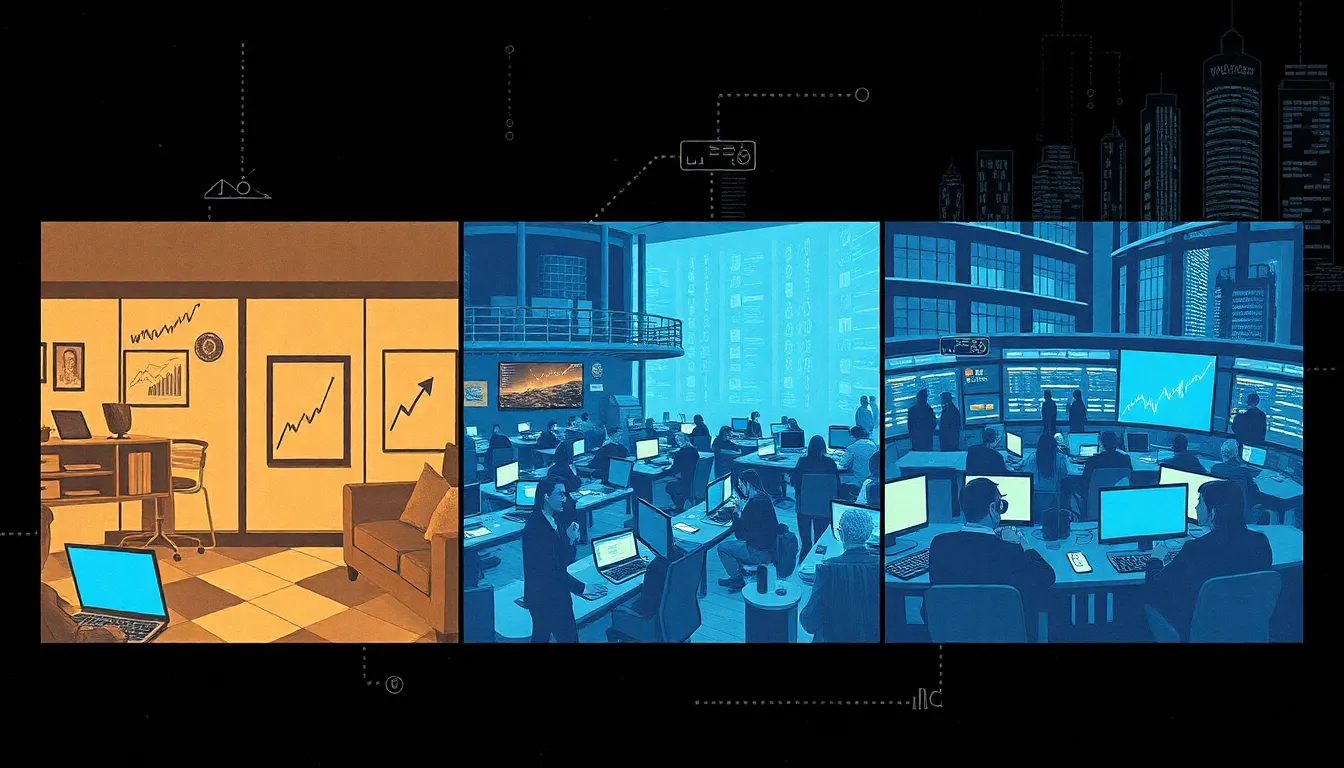Table of Contents
ToggleIn a world where digital transactions can feel as confusing as a cat trying to swim, blockchain marketplaces are here to save the day. These innovative platforms are revolutionizing how people buy and sell goods, all while ensuring transparency and security. Imagine a marketplace where every transaction is recorded on a digital ledger, making fraud as rare as a unicorn sighting.
Overview of Blockchain Marketplaces
Blockchain marketplaces leverage distributed ledger technology to enhance the buying and selling of goods. These platforms provide a secure and transparent environment that fosters trust among participants.
Definition and Concept
A blockchain marketplace serves as a decentralized platform for transactions. It operates on a blockchain, allowing users to trade digital assets directly without intermediary interference. This environment supports various transactions including goods, services, and data exchange. Transparency characterizes the model, as all transactions are recorded on an immutable ledger, ensuring verification and tracking. Users often experience lower fees compared to traditional marketplaces, making transactions more cost-effective.
Key Features
Blockchain marketplaces include several standout features. First, decentralization reduces reliance on single entities, enhancing security. Second, transactions occur in real-time, expediting processes. Third, user anonymity is preserved through encryption, allowing for privacy. Fourth, smart contracts automate and enforce agreements, reducing disputes. Lastly, multi-currency support allows users to transact with various cryptocurrencies, broadening accessibility. These features collectively enhance user experience while promoting innovative trading possibilities.
Types of Blockchain Marketplaces

Blockchain marketplaces can be categorized into three distinct types: decentralized, centralized, and hybrid. Each type features unique advantages and appeals to different users.
Decentralized Marketplaces
Decentralized marketplaces operate on blockchain technology without central authority. Users enjoy direct peer-to-peer transactions, eliminating the need for intermediaries. Trust is established through transparent records on the blockchain, enhancing security. Prominent examples include OpenSea and Rarible, which facilitate NFT trading. These platforms empower users with complete control over their assets and personal information. Smart contracts automate agreements, ensuring fairness in transactions while reducing costs.
Centralized Marketplaces
Centralized marketplaces maintain a central authority overseeing transactions. Users access these platforms for convenience and speed, enjoying a streamlined process. High-profile examples include Coinbase and Binance, which simplify cryptocurrency trading. While these marketplaces enhance user experience and offer extensive customer support, they can present security risks. Data breaches and trust issues arise from reliance on a central entity. Users often relinquish some control over their assets, which may be a drawback for those valuing privacy.
Hybrid Marketplaces
Hybrid marketplaces blend features of both decentralized and centralized systems. These platforms aim to offer the best of both worlds, marrying security with user-friendly interfaces. An example includes Origin Protocol, which facilitates both peer-to-peer transactions and traditional payment methods. While users gain the benefit of decentralized security, they also enjoy the speed of centralized systems. This flexibility appeals to a wide range of users, allowing them to choose their preferred trading methods. Enhanced scalability and improved user experience often result from this dual approach.
Benefits of Blockchain Marketplaces
Blockchain marketplaces offer substantial advantages for users in the digital trading space. These platforms enhance transaction efficiency while ensuring security and privacy.
Enhanced Security
Enhanced security features characterize blockchain marketplaces. Transactions record on a decentralized ledger, making them resistant to manipulation. Each transaction undergoes verification through consensus mechanisms, further reducing fraud risk. Additionally, user data remains encrypted, guarding against unauthorized access. The absence of a central authority lowers vulnerability to hacking attempts too. Users enjoy greater peace of mind knowing their assets are secure and transactions are trustworthy.
Reduced Transaction Costs
Reduced transaction costs serve as a significant benefit for blockchain marketplaces. Without intermediaries, fees associated with traditional marketplaces decline substantially. This system allows for more competitive pricing, attracting buyers and sellers alike. Moreover, smart contracts automate agreements, eliminating associated legal fees and delays. Participants save money and time through streamlined processes. Overall, this cost-effectiveness encourages broader participation and market activity.
Greater Transparency
Greater transparency defines the operation of blockchain marketplaces. Every transaction, recorded on the blockchain, is publicly accessible and immutable. This level of visibility fosters trust among users and reduces disputes. Users can verify transactions independently, ensuring accountability across the marketplace. Furthermore, the establishment of transparent practices promotes ethical trading behavior. Such transparency not only enhances user confidence but also improves market integrity overall.
Challenges Facing Blockchain Marketplaces
Blockchain marketplaces encounter several challenges that hinder their growth and efficiency. Regulatory issues, scalability concerns, and user adoption significantly impact their operations.
Regulatory Issues
Regulatory frameworks remain ambiguous in many jurisdictions. This uncertainty complicates compliance efforts for blockchain marketplaces. Governments may impose strict regulations on cryptocurrency transactions, increasing operational costs. Examples include the need for licensing and adherence to anti-money laundering laws. The lack of a unified global approach creates hurdles for platforms operating internationally. Marketplaces often face scrutiny from authorities, which can lead to legal repercussions for non-compliance. Adapting to evolving regulations becomes essential for success in this space.
Scalability Concerns
Scalability proves to be a major challenge for blockchain marketplaces. Transaction speeds can decline as user volume increases, leading to delays and user dissatisfaction. Blockchains like Ethereum encounter congestion, impacting the processing of transactions. High demand for processing capacity raises gas fees, making transactions costly. Finding solutions that maintain speed without sacrificing security is crucial for user retention. Layer 2 solutions and sharding are among the promising strategies being explored. Addressing these scalability challenges ensures platforms can accommodate growing user bases.
User Adoption
User adoption poses another significant challenge for blockchain marketplaces. Many potential users lack a clear understanding of blockchain technology. Concerns about security and complexity can discourage individuals from participating. Education and resources play vital roles in fostering user confidence. Without sufficient outreach, marketplaces risk stagnation in user growth. Building intuitive interfaces simplifies the user experience, making participation easier. Targeted marketing strategies can help bridge the knowledge gap and attract more users. Engaging with user communities fosters a sense of trust and encourages broader adoption.
Blockchain marketplaces are redefining the landscape of digital transactions. Their unique features offer users enhanced security and transparency while reducing costs and fraud risk. As these platforms evolve they promise to reshape how goods and services are exchanged in a decentralized manner.
Despite facing challenges like regulatory hurdles and user adoption issues the potential for growth remains significant. By prioritizing education and user-friendly experiences these marketplaces can attract a broader audience.
The future of trading lies in the hands of blockchain technology and its marketplaces, paving the way for innovative and secure trading possibilities.






